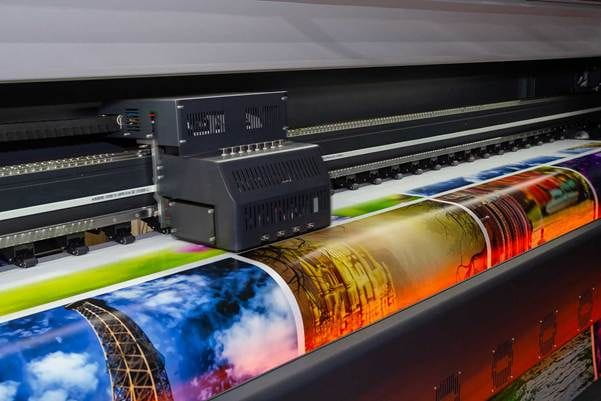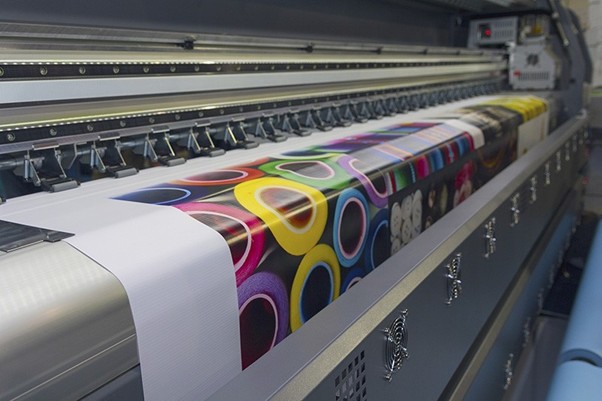Perhaps you’ve passed by an impressive window display or a dramatic billboard and found yourself pausing. You’ve wondered, “How do they achieve such high-quality graphics on a massive scale?” Or maybe, as a business owner, you’re contemplating innovative ways to promote your brand and wondering if large format printing could be your answer. In this blog, we peel back the layers to reveal the workings behind large format printing. We aim to answer your curious questions, address your practical queries, and guide you as you navigate this expansive design world.
Large format printing, often referred to as wide format printing, has revolutionized the advertising and branding industry. The ability to create high-quality prints on a large scale makes all the difference when it comes to making a lasting impression. It has applications in various sectors, from delivering targeted advertisements to creating powerful visual narratives. But what exactly is it about large format printing that makes it such a game-changer? Let’s dive in and find out.
Table of Contents
A Brief History Of Large Format Printing
Tracing the history of large format printing helps us appreciate the advancements this branch of printing technology has made. From the hand-crafted, painstaking process of yesteryears to the sleek, efficient machines of today, the journey of large format printing is truly remarkable.
The advent of digital printing in the 1990s marked a turning point, enabling designers to explore new dimensions in size and detail. Fast forward to present times, and we see the wonders of inkjet technology, facilitating high-resolution prints on an impressive scale. The evolution of large format printing has undoubtedly shaped the visual landscape of our modern world and continues to do so.
Unpacking The Tech: How Does Large Format Printing Work?
Before you get into large format printing, it’s essential to know its fundamentals. It employs digital printing technology to produce images on a variety of materials ranging from vinyl to canvas.
The process involves a computer-controlled printer spraying the desired design onto the chosen material. The vivid results are achieved thanks to the use of different types of inks, each with its peculiar characteristics. These could be UV, Solvent, Dye, Aqueous, or Latex Inks. Their selection depends on the longevity of the print, exposure conditions, and desired finish.
Fields Of Application: Where Is Large Format Printing Used?
Large format printing is utilized in diverse arenas. From architectural firms needing blueprints to retail stores wanting compelling window displays, it finds a broad base of applications.
Event organizers often use it for banners and backdrops for a grand visual impression. Moreover, art studios use large format prints to replicate artworks while businesses use it for branding and advertising. This mode of printing makes it possible to produce high-quality visuals, making it an ideal choice for various sectors.
The Pros And Cons Of Large Format Printing
Like any technology, large format printing has its strengths and weaknesses. On the upside, it enables high-quality prints of large dimensions, making a significant visual impact. It also facilitates printing on a variety of materials, expanding the scope of use.
However, on the downside, the initial setup cost and the maintenance of the machines can be quite high. Moreover, one must consider that while the print quality is high, the intricacy of details may not match smaller scale prints.
Making A Choice: Is Large Format Printing Right For You?
The decision to adopt large format printing rests on several factors, from your budget to your intended purpose. If you’re a business targeting a broad audience with your messaging, this might be a suitable option. Likewise, if you’re an artist aspiring to display your work on a grand scale, large format printing could be your ideal solution.

Exploring Sustainability In Large Format Printing
As we are becoming more conscious of the environment, it’s worth exploring eco-friendly practices in large format printing. This includes using recyclable materials, environmentally-friendly inks, and energy-efficient machines. A sustainable printing approach is not only good for the planet, it’s also great for brand image.
In conclusion, large-format printing presents a world of possibilities – a world that marries technology with design to produce eye-catching visuals. Whether for personal or commercial use, it provides an opportunity to make a big, bold statement. However, it’s necessary to assess the pros and cons to make an informed decision that aligns with your goals and budget. It’s a promising territory worth exploring, especially in this digital age where visual appeal can make all the difference.

